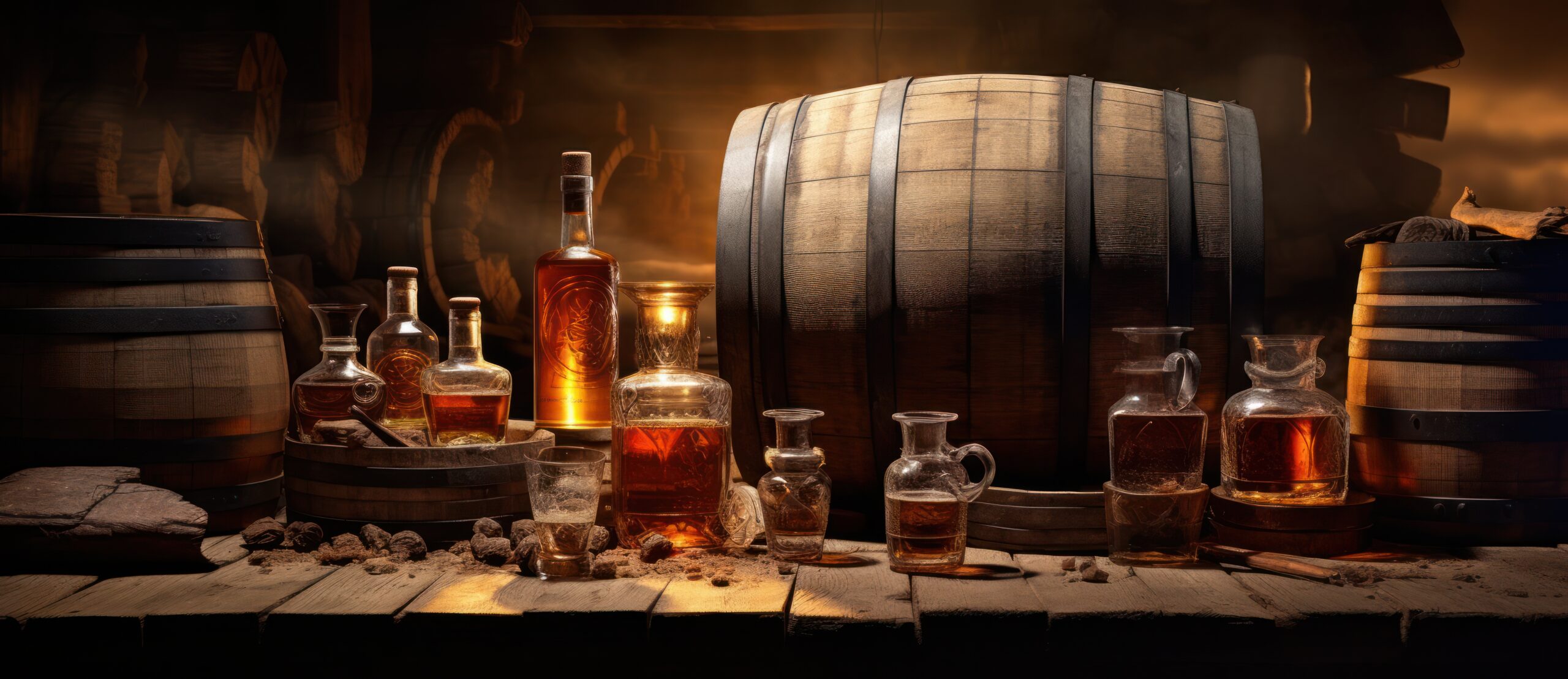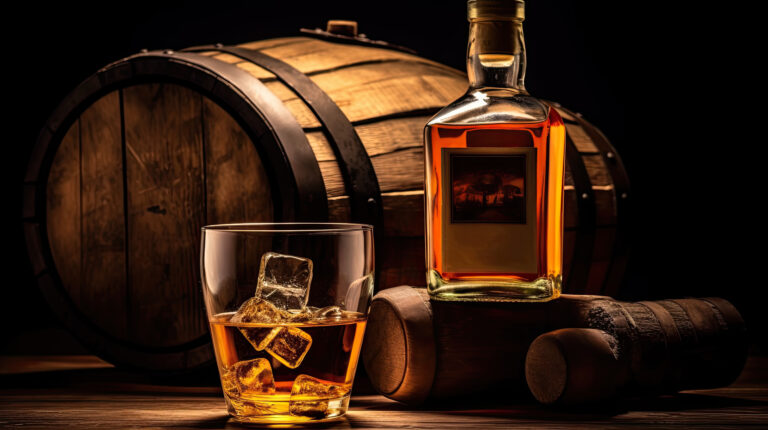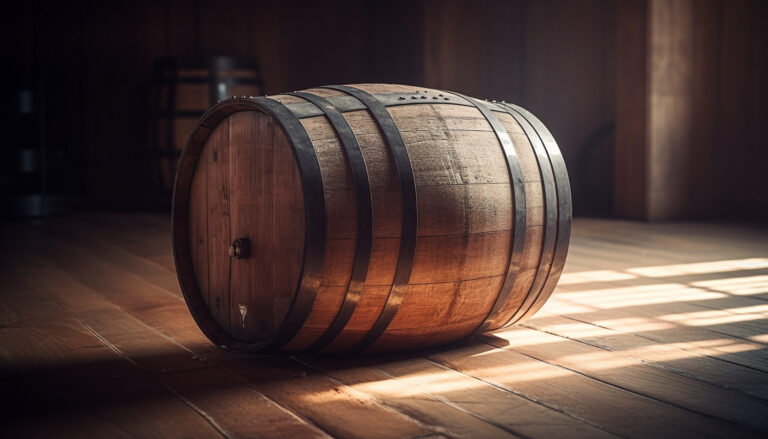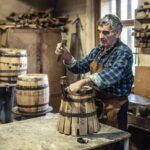Have you ever wondered why that perfectly seared steak or a tray of roasted vegetables bursts with so much flavor? It all boils down to two key players: the Maillard reaction and the impact of char levels on flavor development. When you expose ingredients to high heat, their natural sugars and amino acids undergo a magical transformation called the Maillard reaction. This reaction is responsible for that beautiful browning and the creation of hundreds of flavor compounds that give us those irresistible smells and tastes. The amount of char – whether it’s light, medium, or dark – dictates how quickly this reaction happens and how many of those delicious flavor compounds are formed. Generally, more char means a faster reaction and a more intense flavor. Now you’re in on the secret to why that perfectly seared ribeye or those charred Brussels sprouts taste so ridiculously good.
What Is Char and Why Does It Matter for Flavor?
What exactly is char? It refers to those dark, carbonized bits left behind when you cook food with intense heat, like when you’re grilling meat or roasting coffee beans. Char levels simply tell you how much of this residue is present, ranging from a subtle light brown to nearly black. Char is a big deal because it contributes aroma compounds that really boost the flavor of the foods and beverages we enjoy.
So, why does char matter for flavor? As food heats up, a fascinating array of chemical reactions occurs, leading to the production of hundreds of volatile aroma compounds. The level of char determines which specific compounds are created, directly influencing the overall flavor profile. More char typically results in darker, toastier, and more robust flavors, while less char yields lighter, brighter notes.
Take coffee beans, for example: lightly roasted beans offer bright, acidic flavors, whereas dark-roasted beans, with their higher char levels, develop richer, smokier notes. The same principle applies when comparing a rare steak to a well-done one. A steak cooked longer over high, direct heat will develop more char, giving it a toastier, more savory taste.
Char also adds a delightful texture, from the subtle crispness of a toasted marshmallow to the hearty crunch of a wood-fired pizza crust. When it comes to flavor, char is incredibly important. It’s not just about color – it’s the key to unlocking an entire spectrum of tastes and aromas. Don’t be afraid to experiment with different heat levels and char intensities in your cooking; you’ll be amazed at the impact it has on flavor extraction.
The Maillard Reaction: How Char Impacts Flavor
The Maillard reaction is a fundamental chemical reaction between amino acids and reducing sugars that gives seared and grilled foods their characteristic brown color and incredible flavor. As meat, seafood, or vegetables are exposed to high heat, their natural sugars and proteins interact, creating hundreds of flavor compounds that lead to deliciously complex results.
The Science of the Maillard Reaction
When foods reach temperatures above 300∘F (149∘C), their amino acids and natural reducing sugars engage in a complex series of interactions known as the Maillard reaction. This reaction causes browning and produces a range of smells and flavors, from nutty to savory to sweet. The specific flavors depend on the particular amino acids and sugars present, as well as factors like the pH level and cooking method.
Dry-heat cooking methods like grilling, broiling, and pan-searing are most effective for activating the Maillard reaction because the lack of moisture allows for higher surface temperatures. As the surface browns, the food develops a flavorful “crust” and complex aromas are released. The Maillard reaction is precisely what’s responsible for the mouthwatering smells of cooking meat, seafood, or vegetables on a hot griddle or grill.
The level of “char” or browning on the food’s surface directly impacts its flavor. More char means faster Maillard reactions and stronger, smokier flavors. Lighter browning leads to subtler, sweeter notes. Ultimately, the ideal level of char comes down to personal preference. Whether you prefer an intense, smoky sear or a gentle toast, achieving the perfect Maillard reaction through careful cooking technique can make all the difference in flavor development.
By understanding the chemistry behind browning, you can become a master of flavor extraction through cooking. Adjust your cooking times and temperatures to control the Maillard reaction and achieve your desired level of char and taste. Your cooking will truly never be the same!
Char Levels 1-7: Understanding the Spectrum
When you’re grilling meat or vegetables, the level of char is absolutely essential for developing amazing flavor. As food cooks over high, direct heat, chemical reactions occur that create new flavor compounds. Understanding these char levels will help you better control the flavor of your grilled dishes.
- Char Level 1: No Char At the lowest char level, food is just lightly browned with no visible charring. Little to no new flavor compounds have developed yet, and the natural flavors of the food truly shine. For delicate foods like fish or tender vegetables, Level 1 char might be ideal.
- Char Level 2-3: Light Char As char levels increase, the natural sugars in the food start to caramelize, creating sweet, nutty flavors. The food takes on a light tan color with a few dark spots. Level 2-3 char works wonderfully for chicken, pork chops, or shrimp.
- Char Level 4: Medium Char At Level 4, charring becomes clearly visible, and flavor compounds multiply rapidly. Food develops a rich, savory, and smoky flavor. Here, natural flavors blend beautifully with char flavors. A medium level of char, around Level 4, is excellent for a perfectly grilled steak, bratwursts, or bell peppers.
- Char Level 5-6: Heavy Char Heavily charred food, at Levels 5 and 6, develops intense smoky, savory, and sometimes spicy flavors. The original flavors of the food become less prominent under layers of char, and the texture also becomes softer. Heavy char is ideal for hearty vegetables like corn, asparagus, or eggplant. Just be cautious not to burn the food!
- Char Level 7: Burnt A char level of 7 results in a burnt, acrid flavor as all natural sugars have carbonized. The food becomes dry, crunchy, and bitter. At this point, most of the nutritional value has been lost, and burnt food should generally be discarded.
By understanding how distinct flavors develop at different char levels, you can better control the results of your grilling. Aim for char levels 2 through 6 for maximum flavor, but always be careful not to over-char and burn your food. With a little practice, you’ll be grilling like a pro in no time!
How Char Levels Impact Food Texture
The level of char on grilled or roasted foods directly impacts their texture. As foods are exposed to heat, a series of chemical reactions occurs that breaks down fibers and changes the structure of proteins.
The Maillard reaction is one of the most crucial chemical reactions that happens during cooking. It not only causes browning but also significantly alters flavors. At lower temperatures, the Maillard reaction creates desirable changes, like that gorgeous golden-brown crust on bread or steak. However, at higher temperatures, it can produce bitter, acrid flavors.
- Lightly charred foods will remain quite tender because collagen and cell walls stay largely intact. A light char on vegetables, seafood, or lean meats allows their natural textures to truly shine.
- Moderately charred foods experience more significant changes as collagen melts and cell walls break down. Proteins link together, trapping moisture. The result is a slight chewiness with delightful crispy bits. This level of char is ideal for chicken, pork, and fattier cuts of beef, contributing to a fantastic mouthfeel.
- Heavily charred foods undergo severe structural changes. Collagen and cell walls fully break down, and surface moisture evaporates. The remaining charred bits provide a distinct texture. While the interior may still be juicy, the exterior will be quite crispy. Cuts like brisket, ribs, and sausages can handle aggressive charring, but lean cuts would become too dry.
Charring also dramatically impacts how flavors develop. Lightly charred foods retain fresh, bright flavors. More charring creates richer, smokier notes, while aggressive charring produces bitter, acrid tones. Finding the right level of char for specific foods allows you to create the ideal texture, moisture, and flavor. Paying close attention to cooking times and temperatures will help you master char and achieve barbecue bliss.
Maximizing Flavor With the Right Char Level
To truly maximize flavor in your cooking, controlling the level of char is absolutely crucial. Char refers to the dark brown color that forms on the surface of food when exposed to high heat. The right amount of char enhances flavor through the Maillard reaction, but going too far can lead to bitterness.
Temperature Matters
The higher the temperature, the faster char will develop. Cooking methods like grilling, broiling, and searing use intense direct heat, so you’ll need to keep a close eye on your food. Lower, indirect heat methods like baking, smoking, and roasting are more forgiving but still require monitoring. Generally, aim for medium or medium-high heat and check on your food frequently to achieve optimal flavor development.
Watch Carefully
How quickly char forms depends on several factors, including the type of food, cut, and fat content. Thinner cuts and foods with higher fat and sugar content, like fatty fish, shrimp, and many vegetables, will char faster. Denser foods like thick steaks require more time. No matter what you’re cooking, keep a vigilant eye on it, especially towards the end of the cooking process. Just a minute or two can mean the difference between perfect char and an acrid, burnt taste.
Flip Once (or Twice)
Resist the urge to flip your food more than once or twice. Repeated flipping won’t allow enough time for char to develop properly and won’t produce an even layer. Cook the first side until it reaches your desired level of doneness, then flip and finish cooking to the same degree on the other side. For extra char, you can even try weighting the food down with a heavy pan or a foil-wrapped brick.
Embrace the Smoke
As char forms, compounds break down and volatilize into smoke. Don’t be alarmed if smoke starts rising from your grill, broiler, or pan. Embrace it! That smoke is actually adding loads of delicious smoky flavor to your food. Just make sure your kitchen is well-ventilated, and consider using an exhaust fan. The smoke will dissipate once you remove the food from the heat source.
With some practice, you’ll be achieving perfect char levels and maximizing flavor in no time. Keep at it, learn from your experiences, and most of all, have fun with it! Char-grilled and smoky flavors are truly meant to be savored.
Char Level Recommendations for Different Foods
Char levels refer to how dark or light the roast is for various foods like coffee beans, cocoa beans, or nuts. The level of char directly impacts the flavor, aroma, and texture of the final product. Choosing the right char level depends on the type of food and your personal preference for flavor intensity.
For coffee beans, a light roast like Cinnamon Roast or American Roast will produce a mild, acidic flavor with more prominent coffee bean characteristics. Medium roasts like City Roast or Full City Roast yield a balanced, somewhat smoky flavor that is less acidic but still retains origin characteristics. Dark roasts, such as French Roast or Espresso Roast, produce a thick crema, a smoky flavor, and oily beans with hints of caramel – but they tend to lose most of the original bean flavor. Ultimately, the level of char comes down to how much of the natural bean flavor you want to preserve versus how much roasted, smoky flavor you desire.
When it comes to cocoa beans, a light roast results in a bright, fruity chocolate with tangy, floral notes. Medium roasts create a balanced chocolate with nutty, caramel flavors. Dark roasts produce an intense, smoky chocolate with hints of coffee. The darker the roast, the less discernible the origin characteristics become.
For nuts like almonds or pecans, a light toast will enhance the natural nut flavor while still preserving a firm, crunchy texture. A medium toast yields a golden color, a toasted nutty aroma, and still some crunch. A dark roast produces an oily, crisp, and flavorful nut with a toasted, smoky flavor and aroma. However, nuts can become bitter if over-toasted.
Ultimately, the level of char comes down to personal taste and how much natural flavor versus roastiness you prefer. Whether it’s for coffee, chocolate, or nuts, sample different char levels to find your own flavor sweet spot.
Controlling Your Char Levels While Cooking
Controlling the level of char on your food while cooking can make a huge difference in flavor. Charring occurs when food is exposed to high, direct heat, resulting in browned areas. This browning adds tons of flavor to foods through a process called the Maillard reaction. However, too much char can lead to an acrid, burnt taste.
Finding the Sweet Spot
The key is finding the right balance for your tastes. For most people, a medium level of char provides the optimal flavor. To achieve this, keep a close eye on your food as it cooks over high, direct heat – think grilling, broiling, or pan-searing. Check on it frequently, especially towards the end of the estimated cook time. Look for lightly browned, caramelized areas and flip the food before the char level becomes too dark.
Control the Heat
Higher heat means faster browning, so for more delicate foods, use a lower temperature. For thicker cuts of meat, start over high heat to get a nice char, then reduce the heat to finish cooking through without burning the outside. You can also tent the food with foil, which allows it to continue cooking over indirect heat, preventing excessive charring.
Flip and Rotate
Flipping or rotating the food frequently helps prevent over-charring. Turn meat cuts and vegetables every 2-3 minutes. For shrimp, scallops, and boneless chicken breasts, flip once after about two-thirds of the estimated cook time. Rotating the pan or grill grate, or moving coals around for even cooking, is also helpful for consistent browning.
By keeping a close eye on your food, controlling the level of heat, and flipping frequently, you can achieve perfect char levels for maximum flavor. Striking the ideal balance of charring will make your grilling and pan-searing skills a hit at your next cookout or dinner party. With some practice, you’ll be charring like a pro in no time!
Other Factors That Impact Flavor Extraction
Beyond char, several other factors can significantly affect how much flavor is extracted from ingredients, especially relevant in processes like coffee roasting and brewing.
Roast Level
The darker the roast, the more flavor compounds break down, often resulting in a loss of origin flavors. Lighter roasts, like Cinnamon or City, retain more of the bean’s inherent flavors. Darker roasts, such as French or Italian, have more pronounced roasty, smoky notes from the longer roasting time. For the most flavor complexity, consider a roast in the middle, like Full City.
Grind Size
A finer grind exposes more surface area of the beans to water, allowing for better flavor extraction. Espresso requires an ultra-fine grind, while cold brew uses a coarse grind. For pour-over or drip coffee, a medium grind works well. However, too fine a grind can lead to over-extraction and a bitter taste.
Water Quality
Mineral-rich water helps bring out the flavor notes in the beans. However, water that is too hard can adversely affect flavor by preventing the proper extraction of oils and compounds. Using filtered or bottled water with some mineral content typically produces the best results for optimal flavor development.
Brewing Method
The brewing method itself impacts how much flavor gets extracted from the grounds. Espresso, as a pressurized brewing method, extracts the most flavor in a short time. Cold brew and pour-over are gentler, low-pressure methods but can still produce incredibly flavorful results. Ultimately, the method you prefer comes down to personal taste and the desired aroma profile.
Brewing Temperature
Hotter water temperatures speed up extraction and dissolve more solids, intensifying flavors. Colder brewing temperatures have a gentler extraction that highlights the bean’s subtle notes. For most methods, 195∘F to 205∘F (90∘C to 96∘C) is considered the “sweet spot.” Make minor adjustments up or down based on your specific tastes.
By understanding how these elements interact, you can tweak your brewing to maximize the flavor and aroma compounds extracted from your beans. Subtle changes to one factor at a time can help you achieve the perfect balance of flavors in your cup of coffee.
Frequently Asked Questions on Char and Flavor
Char levels in foods refer to how darkly browned they become during cooking methods like grilling, roasting, or smoking. More char generally means more complex flavors. But how exactly does this work?
Charring food through dry-heat cooking methods causes intricate chemical reactions that create hundreds of new flavor compounds. Two of the most important are heterocyclic amines (HCAs) and polycyclic aromatic hydrocarbons (PAHs). At higher char levels, more of these compounds form.
- HCAs impart savory, meaty flavors. They’re prominently found in grilled and pan-fried meats.
- PAHs offer a range of flavors, from spicy to nutty to floral. They’re commonly found in grilled and smoked foods.
The flavor compounds created during charring interact with each other and the food’s natural flavors in wonderfully complex ways. This is why deeply charred foods like barbecued ribs or wood-fired pizza often have such rich, multi-dimensional tastes.
Here are some additional questions on char and flavor:
Do higher char levels mean more acrylamide?
Yes, generally, the longer and hotter a food is cooked, the more acrylamide can form. Acrylamide is a potential carcinogen created through the Maillard reaction. However, charring food occasionally is considered safe by most experts.
Does charring reduce nutritional value?
Some nutrients like vitamin C and B vitamins can break down during extended, high-heat cooking. However, charring also creates new antioxidant compounds. Many nutrients like protein and minerals remain largely intact. As with many things, moderation in cooking temperatures and charring is key.
What are some tips for maximizing flavor through charring?
Use dry, direct heat from grilling, broiling, or roasting. Always pat foods dry before cooking to promote better browning. Brush on oil or melted fat to encourage even char development. Cook foods in small batches so they spend maximum time exposed to the heat source. Flip only once or twice for optimal crust formation. Finally, let foods rest for 5-10 minutes after cooking before cutting or serving; the residual heat will continue to soften fibers and develop more flavor.
Char may seem complex, but when it comes to taste, it’s simply delicious. Understanding the chemistry behind charring helps you become a better cook and make the absolute most of your meals.
Final Thoughts
Look, you want the best-tasting coffee, tea, or perfectly cooked meal possible, right? Well, now you’re in on the secret – it’s all about achieving the perfect char level and maximizing flavor extraction. Armed with the knowledge of how compounds break down and interact at different cooking temperatures, you can confidently experiment with your roasting, grilling, or steeping methods to achieve your ideal flavor profile. Whether you prefer light, medium, or dark roasts, or green, oolong, or black teas, understanding the science behind the scenes will make you a flavor expert in no time. So get out there and spread the word – that perfect cup of joe or afternoon tea, or even a wonderfully charred steak, is within anyone’s grasp if they just apply a little science. Your taste buds will definitely thank you!







